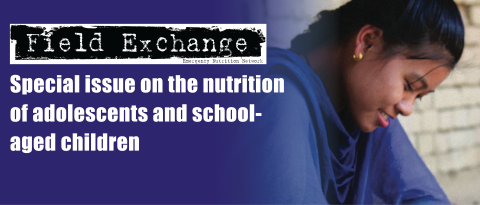UNICEF programming guidance: Nutrition in middle childhood and adolescence
UNICEF (2021). UNICEF programming guidance: Nutrition in middle childhood and adolescence. Available from: https://www.unicef.org/media/106406/file
Middle childhood and adolescence are critical life stages when malnutrition has long-term implications on physical, social and mental growth and development. Undernutrition and chronic infections affect enrolment, attendance and performance at school, influencing children’s ability to become productive adults. On the other hand, childhood overweight and obesity increase the risk of developing noncommunicable diseases such as diabetes and cardiovascular disease in later life.
In 2016, approximately 8% (75 million) of girls and 12% (117 million) of boys 5-19 years of age globally were classified as thin. For girls 15-19 years of age, the prevalence of anaemia ranged between 16% in the Middle East and North Africa and 54% in South Asia. In some low- and middle-income countries, ultra-processed foods comprise 18-35% of overall food consumption, contributing to the global rise in obesity that affected a staggering 125 million children 5-19 years of age in 2016. In many countries, these different forms of malnutrition coexist, highlighting the need for policies and programmes that address all forms of malnutrition through coordinated efforts across five key systems: education, food, health, water and sanitation and social protection
UNICEF’s recently published guidance aims to inform programming efforts to “protect and promote diets, services and practices that support optimal nutrition, growth and development in middle childhood and adolescence”. The overarching framework is aligned with UNICEF’s Nutrition Strategy 2020-20301 and articulates programme priorities as follows: (1) nutritious foods in schools and beyond; (2) healthy food environments in schools and beyond; (3) micronutrient supplementation and deworming; (4) nutrition education in school curricula; and (5) healthy dietary practices for school-age children and adolescents. Technical and operational guidance is provided for the design, implementation, monitoring and evaluation of programmes, all of which should be evidence-driven and respond to the nutrition situation, resources and other contextual factors specific to the target country. In addition, the meaningful engagement and participation of children and adolescents is needed to ensure that these groups are provided with appropriate platforms and means to produce knowledge, influence decision-making and drive progress. Finally, programming should be guided by key principles to ensure that implementation across priority areas is rights-based, equity-focused and gender-responsive.
Through its systems-based approach, UNICEF recognises the central role of the education system for reaching children with essential nutrition interventions, including providing nutrition education, school meals, micronutrient supplementation and deworming prophylaxis, as well as promoting and supporting opportunities to be physically active. The food system also plays a central role in shaping healthy food environments both in- and out-of-school while the health, water and sanitation and social protection systems should ensure access to diets, services and practices that support adequate nutrition, growth and development among children and adolescents. Integration across these systems, and their related delivery platforms, is critical to the effective design and delivery of evidence-based interventions and programmes that include robust reporting and monitoring frameworks to track progress towards the key priorities. The guidance also highlights the importance of including school-aged children and adolescents in humanitarian response as well as strategic partnerships with governments, academia, bilateral agencies, youth leaders, the private sector and other organisations as crucial to achieving results.
1 Available at: https://www.unicef.org/reports/nutrition-strategy-2020-2030


